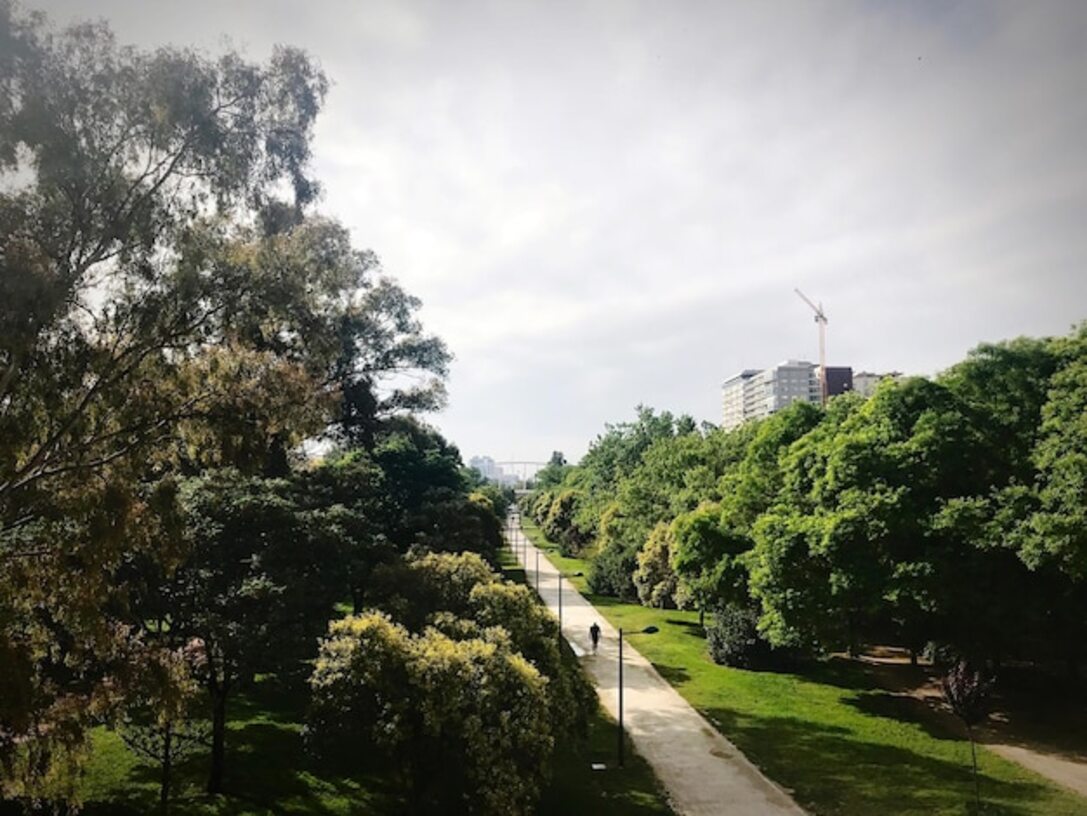How green spaces raise property values in emerging areas

Green spaces are more than just decoration in a community; they are engines of development and added value in emerging areas. In a world where urbanization is advancing rapidly, the presence of parks, gardens, and recreational areas becomes an irresistible attraction for buyers and investors. In this article, we will explore how green spaces not only beautify the environment but also increase property values, transforming communities and offering unique opportunities in the real estate market.
The importance of green spaces in urban development
The integration of green spaces in urban development is essential for creating sustainable and healthy communities. These natural environments not only provide a visual respite amid concrete, but they also improve air quality and encourage an active lifestyle. Studies have shown that the presence of parks and green areas can reduce stress, increase resident satisfaction, and promote social interactions, contributing to better community cohesion. In this regard, green spaces act as a magnet for families looking for a place to live, which increases the demand for nearby properties.
Additionally, urban planning that incorporates green spaces has a direct impact on the appreciation of properties. By providing access to recreational and scenic areas, an attractive environment is created for potential buyers and tenants. This not only raises the value of the local real estate market but can also revitalize emerging areas by attracting additional investments. As more people are drawn to these natural features, real estate developers understand the importance of including green spaces in their projects, thus generating a positive cycle that benefits both the community and investors.
2. How parks improve quality of life
Parks and green spaces play a crucial role in enhancing the quality of life in communities. These places not only provide a respite from urban bustle but also foster social interaction, creating a sense of belonging among residents. Recreational areas promote outdoor activities, contributing to a healthier and more active lifestyle. Additionally, the presence of nature has proven positive effects on mental well-being, helping to reduce stress and improve the mood of those who visit regularly.
Likewise, parks act as catalysts for local economic development. The creation and maintenance of green spaces attract young families and professionals looking for pleasant environments to live in. This drives the growth of local commerce, as visitors feel encouraged to explore nearby cafes, restaurants, and shops. Consequently, there is an increase in real estate demand in the vicinity of these natural spaces, thereby raising property values and transforming emerging areas into desired locations for buyers and investors.
3. Green spaces: a magnet for buyers and investors
Green spaces act as a magnet for buyers and investors, as they not only enhance the aesthetics of an area but also promote a healthy and sustainable lifestyle. In emerging areas, where urban developments may be limited or disorganized, the inclusion of parks and gardens translates into a higher quality of life. Potential homeowners seek environments that offer tranquility and a connection to nature, making these spaces decisive factors when it comes to purchasing decisions. Proximity to green areas is often associated with lower stress, greater physical and mental well-being, and a stronger sense of community.
From a financial perspective, investors see green spaces as an opportunity to maximize the value of their investment. Properties near well-maintained parks tend to have higher appreciation and sustained demand over time. This is because green areas not only provide a place to relax and enjoy the outdoors, but also foster community activities and social events that attract both residents and visitors. By investing in communities with abundant green spaces, developers can ensure a significant return on their investment while contributing to the sustainable and balanced development of the area.
4. The positive environmental impact of green areas
Green areas play a crucial role in improving the quality of the urban environment. Acting as the lungs of the city, these spaces contribute to reducing air pollution by absorbing carbon dioxide and releasing oxygen, resulting in a healthier environment for residents. Additionally, trees and plants help regulate ambient temperature, creating cooler and more pleasant microclimates, especially in areas where asphalt and concrete predominate. This positive impact not only benefits public health but also attracts families and investors who value a clean and sustainable environment.
The presence of green areas also fosters urban biodiversity, providing habitats for various species of flora and fauna. This not only enriches the local ecosystem but also creates an emotional connection between residents and their natural surroundings. Studies have shown that communities with more green spaces tend to have less crime and greater social cohesion, as these places become meeting points where people can interact and establish bonds. Thus, by enhancing the aesthetic and functional appeal of an emerging area, green spaces help increase its value, making it a preferred option for living and investing.
5. Successful cases: cities that have transformed their added value with green areas
Cities that have focused on integrating green spaces into their urban development have achieved remarkable results in terms of added value. A notable example is Medellín, Colombia, where the implementation of the park and public space system in areas previously considered marginal has transformed the urban landscape and improved the quality of life for its inhabitants. Projects like the Jardín Circunvalar have not only beautified the city but have also driven a significant increase in the value of nearby properties. This type of initiative demonstrates how intelligent urban planning can turn underdeveloped areas into attractive destinations for residents and investors.
Another successful case is that of Singapore, which has been globally recognized for its innovative approach to urban green spaces. Through the "City in a Garden" program, Singapore has incorporated an impressive variety of parks and vertical gardens throughout its buildings and streets. This strategy has not only elevated urban aesthetics but has also contributed to a steady increase in real estate prices. The creation of these green spaces has made many developments highly desirable, creating a virtuous circle where added value rises alongside investment in green infrastructure, establishing Singapore as a global benchmark in sustainability and urban planning.
6. Strategies for integrating green spaces in real estate projects
The integration of green spaces in real estate projects requires a strategic and visionary approach. First, it is essential to conduct a thorough analysis of the environment and the specific needs of the community. This involves identifying areas prone to development and assessing the demand for recreational spaces that promote social interaction and the well-being of residents. Incorporating elements such as community gardens, pedestrian pathways, and play areas not only adds aesthetic value but also promotes a healthy lifestyle, which in turn can attract young families and professionals looking for a home in a vibrant location.
In addition, collaboration with landscapers and landscape architects is essential to create sustainable designs that harmoniously integrate with the surrounding nature. Implementing eco-friendly practices, such as the use of native plants and efficient irrigation systems, not only reduces long-term costs but also contributes to environmental conservation. The creation of multifunctional green spaces - that can be used for community events or sports activities - can maximize the use of the area and significantly increase the value of the real estate project. Thus, developers can position themselves as pioneers in creating more livable and sustainable communities, opening new opportunities in an increasingly competitive market.
7. The relationship between green spaces and mental health
Green spaces play a fundamental role in individuals' mental health, providing a refuge of tranquility and well-being amidst urban bustle. The connection with nature has been shown to have positive effects on reducing stress, anxiety, and depression. Spending time in natural environments allows people to disconnect from daily demands and recharge, resulting in a better quality of life. In emerging communities where rapid development can create an overwhelming environment, having parks and landscaped areas becomes a valuable resource for fostering emotional balance.
Additionally, green spaces promote healthy social interactions, contributing to greater community cohesion. By offering places where residents can gather, socialize, and engage in recreational activities, these spaces not only improve individual mental health but also strengthen bonds between neighbors. This social interaction is crucial for creating a sense of belonging and community, which in turn increases the appeal of emerging areas for both new residents and investors. In summary, integrating more green areas not only beautifies the physical environment but also provides psychological and social benefits that enhance the value of these locations.
8. Current trends in public space design
The design of public spaces has evolved significantly in recent decades, with a growing focus on sustainability and inclusion. Nowadays, the goal is to create environments that are not only aesthetically pleasing but also promote social interaction and the well-being of citizens. The integration of green areas within these spaces is essential; urban parks with accessible pathways, children's play zones, and rest areas become focal points where communities can gather and enjoy the outdoors. This type of design not only enhances quality of life but also plays a crucial role in increasing property values by attracting more residents and investors.
Another notable trend is the incorporation of technology and interactive elements in public spaces. From artistic installations to smart sports equipment, designers aim to create unique experiences that connect people with their environment. Additionally, there is a special emphasis on the use of sustainable materials and eco-friendly methods to ensure that these spaces are not only functional but also environmentally friendly. By fostering a culture of care for public space and raising community awareness about its importance, a sense of belonging is generated that further enhances the value of surrounding properties. In this context, green spaces emerge as essential protagonists in contemporary urban development.
9. Sustainable future: urban planning with an ecological approach
Urban planning with an ecological approach is essential to ensure a sustainable future in emerging areas. By strategically incorporating green spaces, cities not only enhance their aesthetics but also foster a healthier and more livable environment. Urban parks and gardens act as natural lungs, absorbing carbon dioxide and releasing oxygen, which contributes to improved air quality. Moreover, these spaces provide habitats for local biodiversity, promoting a harmonious coexistence between human development and nature.
Similarly, by integrating green areas into urban planning, multiple social and economic benefits are generated. Green spaces are meeting points that foster social cohesion and create opportunities for recreational and cultural activities. Communities with easy access to these environments often experience a decrease in stress levels and an increase in the overall satisfaction of their residents. This directly translates into an increase in property values in those areas; buyers increasingly value living near parks and open spaces. Therefore, investing in ecological urban planning not only addresses an environmental need but is also a smart strategy to enhance sustainable economic growth.



